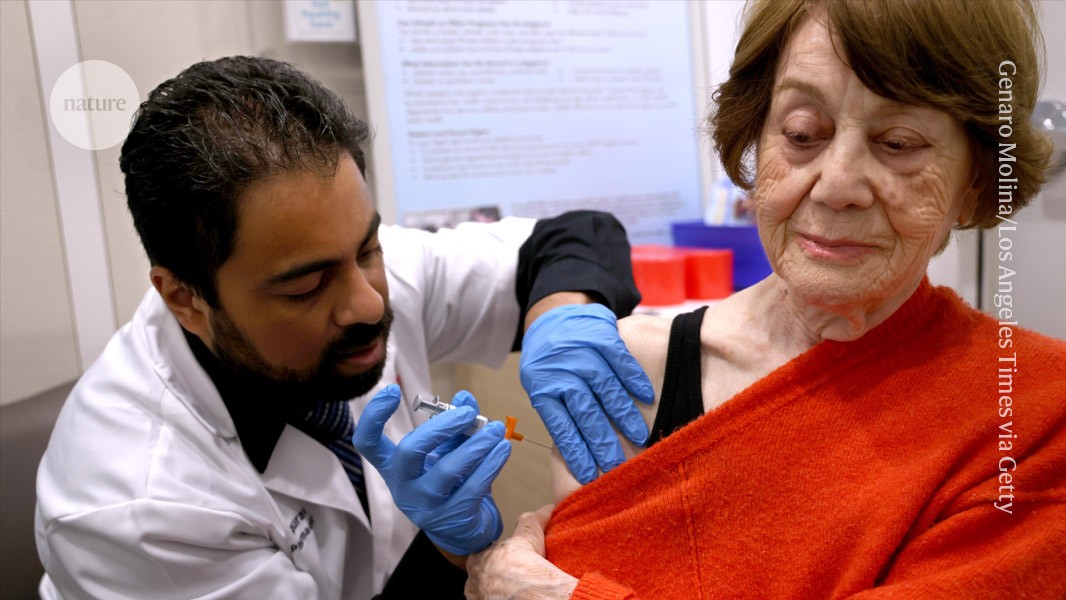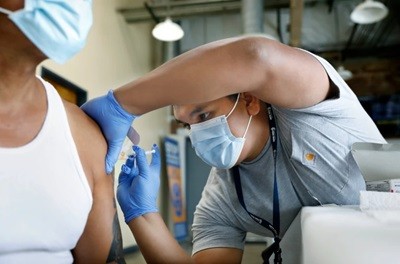
Receiving a second dose of COVID-19 vaccine in the same arm as the first elicits a speedy immune response.Credit: Genaro Molina/Los Angeles Times via Getty
Receiving a COVID-19 booster vaccine in the same arm as the first vaccine dose leads to a faster, more effective immune response than having it in the opposite arm, according to a study in mice and people. The results are described in Cell today1.
“The outcome is important if we did find ourselves in a pandemic setting again, with some other virus that we may then have a new vaccine for,” says co-author Mee Ling Munier, a vaccine researcher at the Kirby Institute at the University of New South Wales in Sydney, Australia.
The question of which arm produces a more effective immune response from vaccination has persisted for a long time, says Munier. “Most people get their vaccine in their non-dominant arm because that doesn’t affect their day-to-day life.” But experiments in mice suggest that where a vaccine is given can affect the body’s immune response, she adds.
154 million lives and counting: 5 charts reveal the power of vaccines
Munier and her colleagues found that specialized immune cells called subcapsular sinus macrophages in mouse lymph nodes, play an important part in mounting an immune response to vaccination.
When a booster vaccine was administered in the same location as the initial dose, the mice’s subcapsular sinus macrophages were already primed. They reactivated immune cells called memory B cells more quickly than did the cells of mice whose second vaccination was administered in a different limb.



